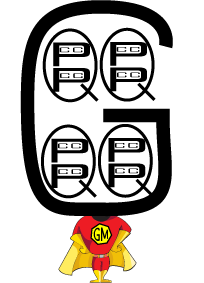 |
| clipartpanda.com |
Baking and cooking are great ways to have children work with numbers (especially fractions) and measurement in a meaningful way.
Here are some possible discussions to have with children when baking/cooking:
 |
| inubugydenu.site11.com |
- Discuss the different measuring cups and spoons you are using and compare the sizes
- Which cup is biggest? Which cup is smallest? Is the 1/2 cup or 1/3 cup bigger?
- How many 1/4 cups of sugar would we need to make a whole cup? Test it out!
- Discuss the ways to measure different ingredients
- What measuring tools are typically used for dry ingredients? Liquid ingredients?
- A liquid measuring cup usually has measurements for cups, as well as ounces
- Are there any other ways you have seen liquids measured before [thinking the metric system - liters (L), milliliters (mL)]?
- Discuss other measurements used in the kitchen
- In addition to cups, foods can also be measured in pints, quarts, and gallons (use Gallon Man, at right, to help remember the relationships between these measurements), or by weight (pounds and ounces)
- When looking at recipes, discuss how many servings or items the recipe should yield
- A cookie recipe might yield 2 dozen cookies
- How many cookies is that?
- What would we need to do to the ingredients in the recipe if we only wanted 1 dozen cookies? What about if we wanted 4 dozen cookies? 5 dozen?
- Sometimes there can be situations trickier than halving or doubling a recipe
- Recently, I made Maple Butternut Squash Puree. The ingredient list is below on the left. I needed to do some calculating to figure out how to make more servings for a large family dinner (see image below on the right).
- I had bought two butternut squashes at the grocery store, totaling 5.8 pounds according to my receipt. Since the original recipe called for 3 1/2 pounds of squash I needed to figure out what to multiply each ingredient amount by in order to proportionally change the other ingredients in the recipe.
- I chose to convert 5.8 pounds to a fraction (see previous post from 4/4/15 for more on that!) and subtract 6 ounces (3 oz for each squash that are lost when peeled). Then I rounded to the nearest half pound and subtracted to find that I had two extra pounds, meaning that I had 1 2/3 times the amount of squash that is called for in the original recipe. I was then able to multiply each ingredient by 5/3 to find the new amounts I needed to measure for the larger recipe.
- HOME/SCHOOL ACTIVITY
- Have children find copies of their favorite recipes, then have them use those recipes to complete the Recipe Worksheet posted on my Worksheets/Solutions page.
- The numbers on the worksheet can be modified for different ages/grades or in order to differentiate for different abilities in the classroom.
Age/Grade Guidelines:
In Massachusetts, the Common Core State Standards have been adopted. Multiplication of fractions is a 5th grade standard. In order to change the amounts of ingredients needed in a recipe, children will need to be able to multiply a fraction or whole number by a fraction (CCSS.MATH.CONTENT.5.NF.B.4). It would also help for children to understand that one can get a smaller product by multiplying by a fraction smaller than 1 (CCSS.MATH.CONTENT.5.NF.B.5.B). Additionally, children show that they are able to solve real life math problems and show the math work necessary to calculate the answer (CCSS.MATH.CONTENT.5.NF.B.6).





